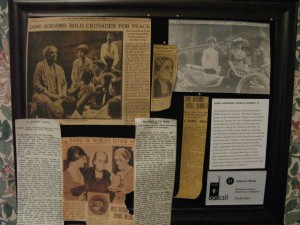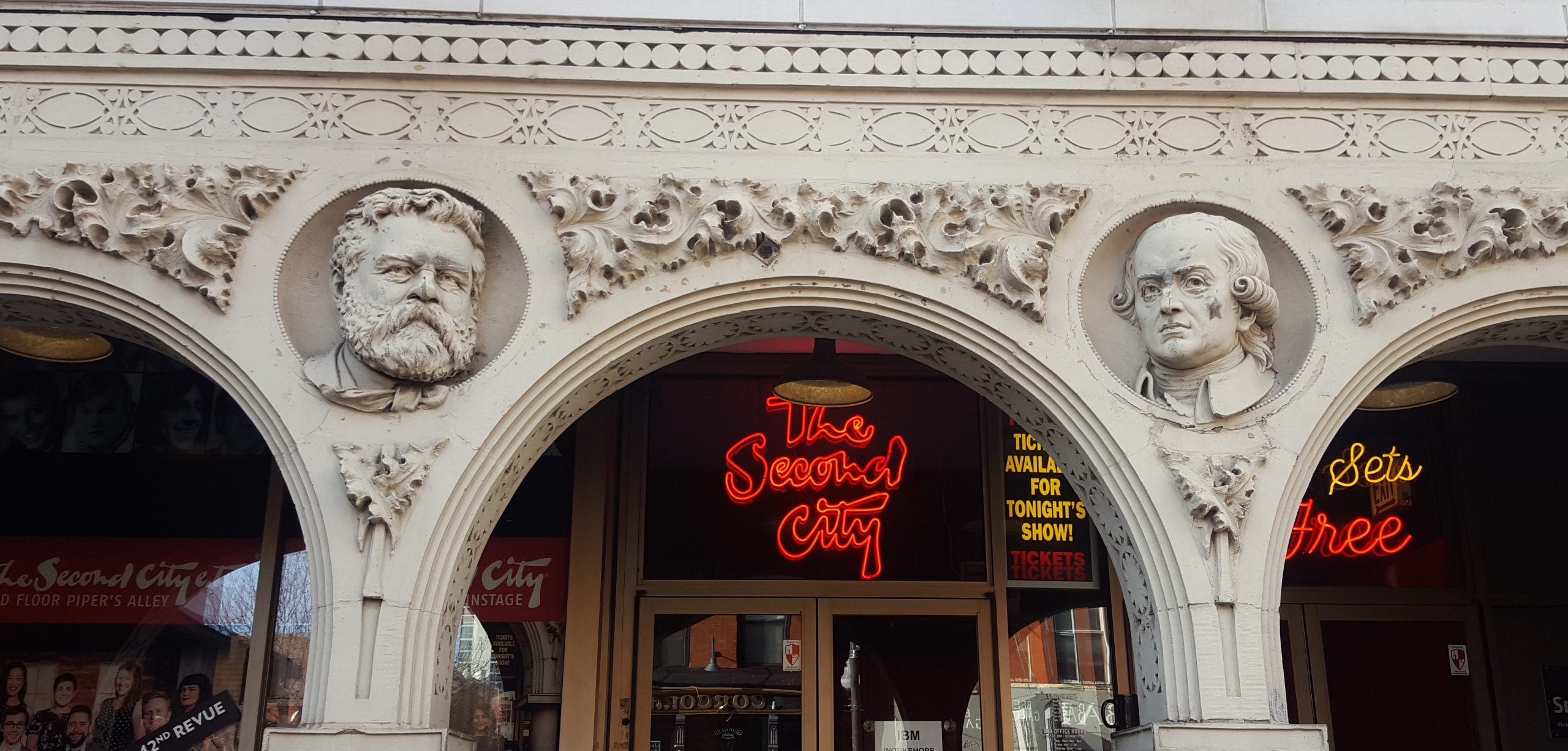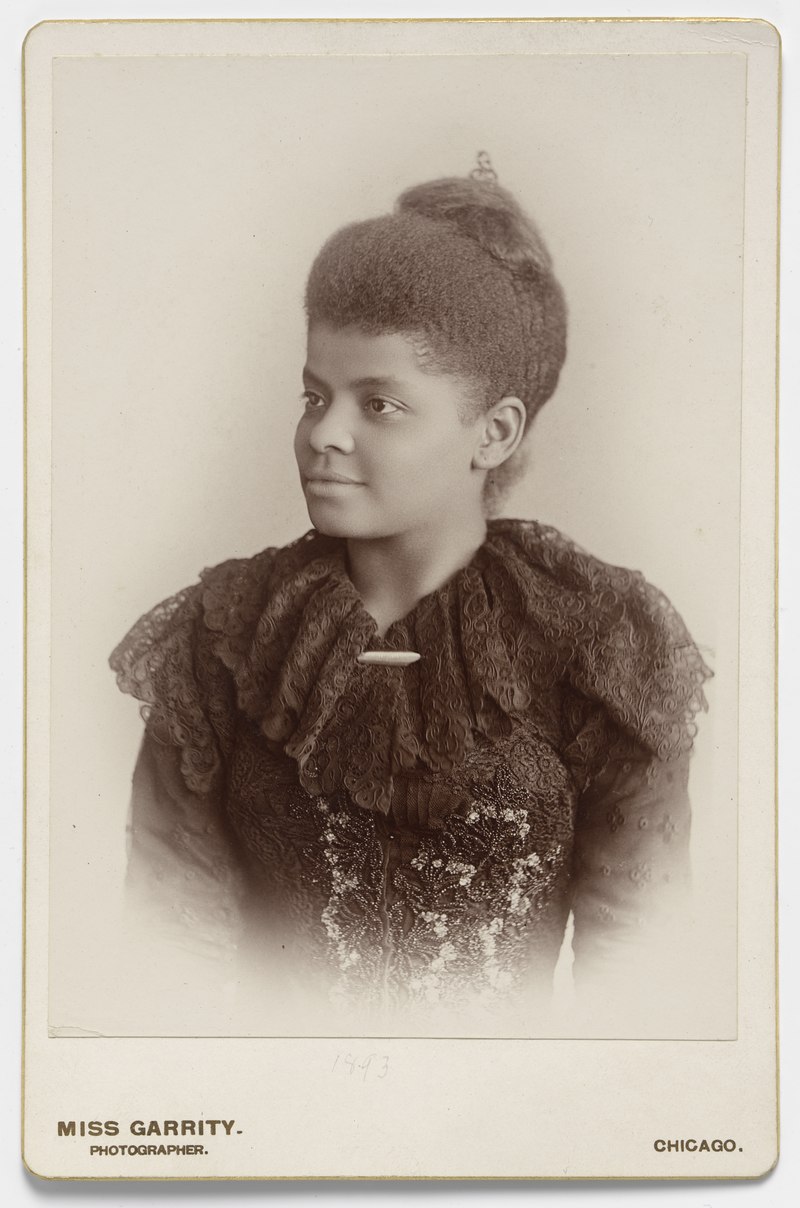Among the 1950s and 1960s buildings of the University of Illinois at Chicago campus, one place just does not look like the others! The original Jane Addams Hull House, now a museum, has Italianate cornices and a columned porch. In addition to Jane Addams fame as the “Mother of Social Work,” here you can gain insight into the life of hard-working immigrants in Chicago during the early 1900’s. Sometimes guests on our custom tours see this historical site and learn about the ways Jane Addams still has impact on our lives today.
Visit the Hull House
Entering the Hull House is like stepping back in time, and the exhibits do a good job of showing the surrounding environment and community issues of one century ago.  A film loop showing Halsted street life in 1931 projects next to some windows that face the Halsted of today with bustling crowds of students and cars. Things back then were quite different: open carts, children, animals, and vendors clogged the streets. Men in top hats or in overalls walked around and women in floppy hats examined vegetables. In this photo, Florence Kelley wears a particularly precarious hat. The library holds her translation (from German) of Condition of the Working Class in 1844 by Frederick Engels. You may know him as the co-author of The Communist Manifesto. Visitors can flip through the inspiring, empowering and incendiary literature of the time. Titles such as Does Prohibition Work? stand beside memoirs of Black Americans and philosophical texts.
A film loop showing Halsted street life in 1931 projects next to some windows that face the Halsted of today with bustling crowds of students and cars. Things back then were quite different: open carts, children, animals, and vendors clogged the streets. Men in top hats or in overalls walked around and women in floppy hats examined vegetables. In this photo, Florence Kelley wears a particularly precarious hat. The library holds her translation (from German) of Condition of the Working Class in 1844 by Frederick Engels. You may know him as the co-author of The Communist Manifesto. Visitors can flip through the inspiring, empowering and incendiary literature of the time. Titles such as Does Prohibition Work? stand beside memoirs of Black Americans and philosophical texts.
Jane Addams Public Enemy #1
When Jane Addams arrived in this area, known as the 19th ward, she was angered to see that the city did not come to pick up the trash in the streets. First let me clarify what “trash” was a century ago. Not only was it food waste and tissues, it included human waste and even dead animals! “Dead horses and dogs abounded in the nineteenth ward,” reported the Chicago Evening Journal on July 29, 1895.
Then Jane Addams stepped in. She started following the city trash pick-ups making sure that they did not skimp on their job. Clean streets made the 19th ward a more dignified and healthy environment to live in. Alice Hamilton, yet another Hull House luminary who ran a medical education center there, discovered connections between street waste and disease.
Because of her fight for peace, women’s rights, and her ability to assemble people and get them thinking, Jane Addams was not only the first American woman to win a Nobel Peace Prize, but also the FBI’s “Public Enemy #1” and “The Most Dangerous Person in the United States.” Why? Because she worked with the oppressed. She fought against the way things were and united people of all different backgrounds, educating them and bringing them a voice. A bulletin board hanging in Addams’ bedroom has clippings about her and the threat or blessing that she was.  (If you would like to learn more about Addams as a public enemy, dial 703 637 9317, then press 21 when you hear the recording.) Her bedroom also contains her furniture, childhood doodles, and letters to her close companion, Mary Rozet Smith. Historians skirted around their relationship for many years, as they were likely lesbians and life-long partners.
(If you would like to learn more about Addams as a public enemy, dial 703 637 9317, then press 21 when you hear the recording.) Her bedroom also contains her furniture, childhood doodles, and letters to her close companion, Mary Rozet Smith. Historians skirted around their relationship for many years, as they were likely lesbians and life-long partners.
The Legacy of Hull House
My favorite room of all in the museum was one that was completely empty. It plays a four-minute loop of sounds from the Hull House archives: children’s feet in the Hall, Jane Addams’ and Studs Terkel’s voices, the sound of

a sewing machine, the workers and animal calls of a slaughterhouse, an old-fashioned doorbell, and even the song of the Ruby Crown Kinglet, the most prevalent bird in Chicago in 1900.
– Sophie Grimes, Editorial Intern

















